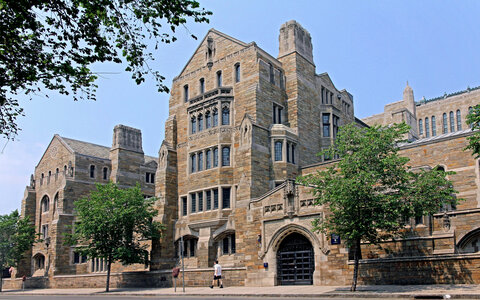 Schools are beginning to release their early application numbers for the Class of 2028, and so far the numbers are up! The Common App released preliminary stats that early applications have increased 41% since 2019 (pre-pandemic) and this is mostly due to a large increase in minority applicants. According to Inside Higher Ed, applications from minority applicants rose 67% and applications from students attending high schools in lower-income zip codes increased 52% since the 2019-2020 early application cycle. Note that this timeframe measures the total increases from pre-pandemic times to now, so the significant increase in test-optional policies during Covid impacts this trend.
Schools are beginning to release their early application numbers for the Class of 2028, and so far the numbers are up! The Common App released preliminary stats that early applications have increased 41% since 2019 (pre-pandemic) and this is mostly due to a large increase in minority applicants. According to Inside Higher Ed, applications from minority applicants rose 67% and applications from students attending high schools in lower-income zip codes increased 52% since the 2019-2020 early application cycle. Note that this timeframe measures the total increases from pre-pandemic times to now, so the significant increase in test-optional policies during Covid impacts this trend.
Mark Freeman, Vice President of Data Analytics and Research for the Common App, notes that for early and rolling applications, so far the number of students applying through the Common App platform has risen 12% since last year and the number of applicants from underrepresented racial and ethnic groups is up 21% from last year.
About one-third of all four-year undergraduate institutions are members of the Common App. Since 2019, Common App applications at public universities have risen 82% compared to a 47% increase at private institutions. Freeman also highlighted that 28 state flagship universities have been added to the Common App over the past decade. Public universities also tend to be more affordable than private colleges.
What does this all mean for early applicants? Read more to find out our analysis of these numbers and tips for your regular applications.
Contact us for a free consultation!
Early applications from minority groups have surged since 2019. The Common App reports that early applications from Black students rose 70% over this time period, and early applications from Native Americans rose 86%. Alternatively, the number of white college applicants has decreased by 10% over the past decade.
UVA received a record number of Early Decision and Early Action applications this year. 42,093 students (roughly 1/3 in-state and 2/3 out-of-state) applied for the Class of 2028, a 3.4% increase over last year. Last year, UVA accepted 16% of Early Action applicants and 24% of Early Decision applicants.
According to The Cavalier Daily, UVA expanded their outreach programs this year in response to the Supreme Court ruling on race-conscious admissions. “In addition to changing application questions, the University responded by promoting outreach programs, including a partnership with the Office of African-American Affairs, Multicultural Student Affairs and other University departments for two Fall Fest events.” Early applications from first generation students dropped 2% this year, however early applications from Black applicants rose 11%.
This fall, Yale received its second largest cohort of early applicants for its Single Choice Early Action program. According to Mark Dunn, Senior Associate Director for Outreach and Recruitment at Yale’s Office of Undergraduate Admissions, their early applicant pool has increased by 30% over the past five years.
Our Analysis and Recommendations
Overall, students could be increasing the number of colleges that they are applying to in the early round due to the uncertainty caused by the Supreme Court ruling on race-conscious admissions, as well as the higher acceptance rates for early programs compared to regular admissions. Any time there is a shift in admissions trends and more uncertainty, students seem to increase the number of schools that they apply to.
In short, our takeaway is that students should expect an even more competitive early admissions season. Schools may be very conservative in admitting early applicants and deferrals could increase. Brace yourself for an unpredictable early admissions cycle!
In light of these preliminary early application stats, we recommend that your list has safe and target schools in addition to reach schools. Do not wait for early application results to prepare high-quality regular decision applications. If you are deferred or denied from your Early Decision choice, you will not be in the best mindset to create your best applications.
Continue to demonstrate informed interest to your colleges! When schools have so many candidates to evaluate, they factor in each applicant’s degree of genuine interest in attending – both to protect their yield and to put together a class of enthusiastic and committed students!
Early application plans are increasing in availability and usage, and typically confer higher admit rates because they show a higher level of demonstrated interest in the college. Deciding whether and where to apply early can be daunting, especially now. But whatever your question, Collegiate Gateway is happy to help you decipher your options and understand the changing landscape of early admissions.
